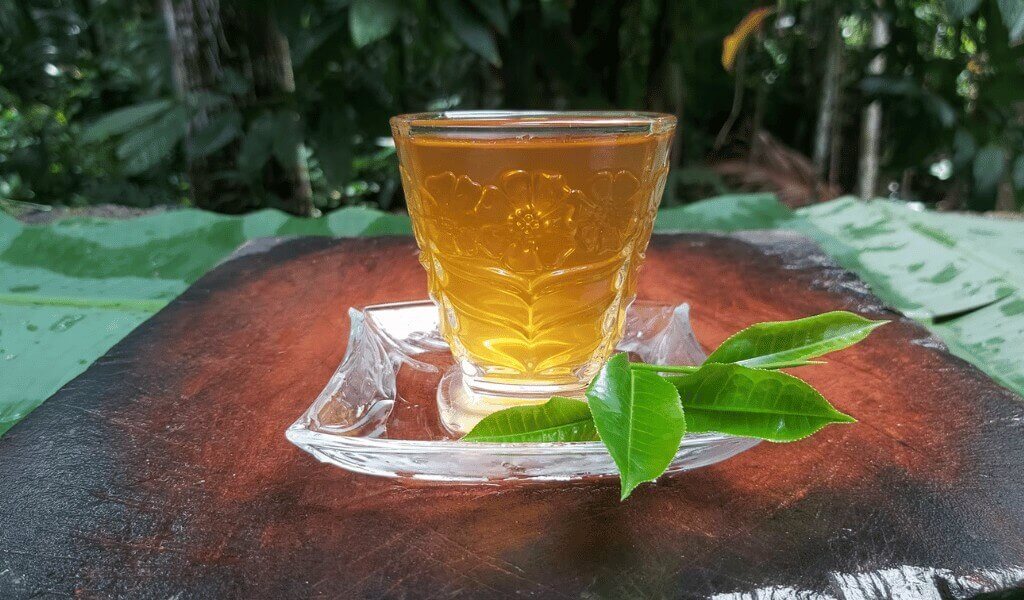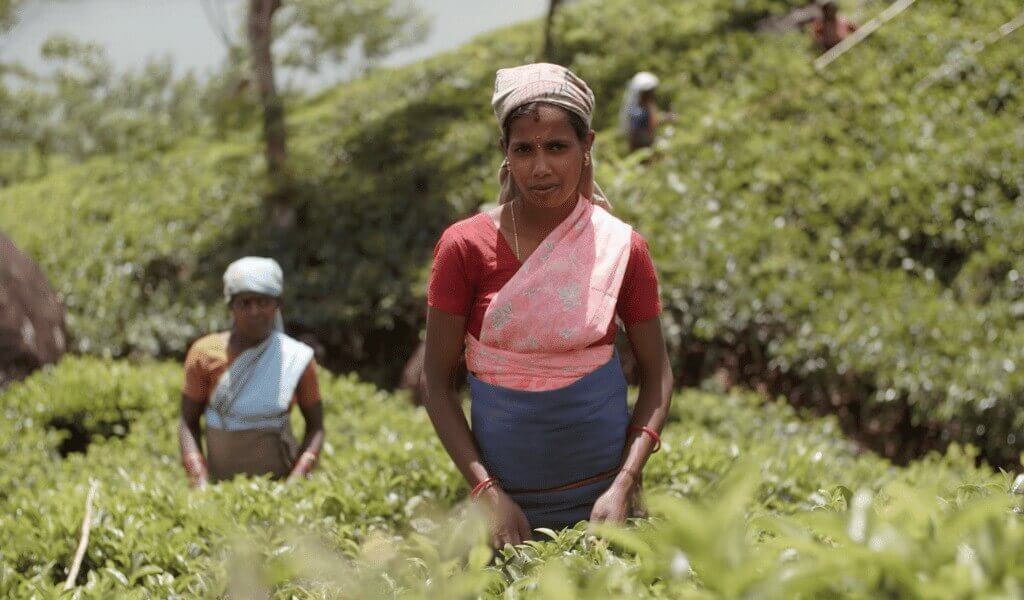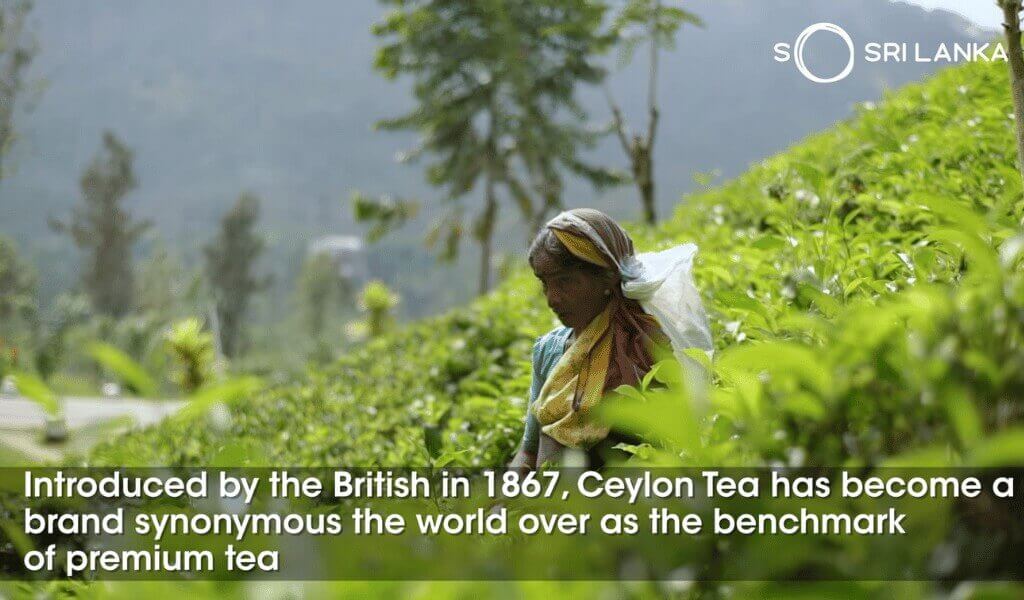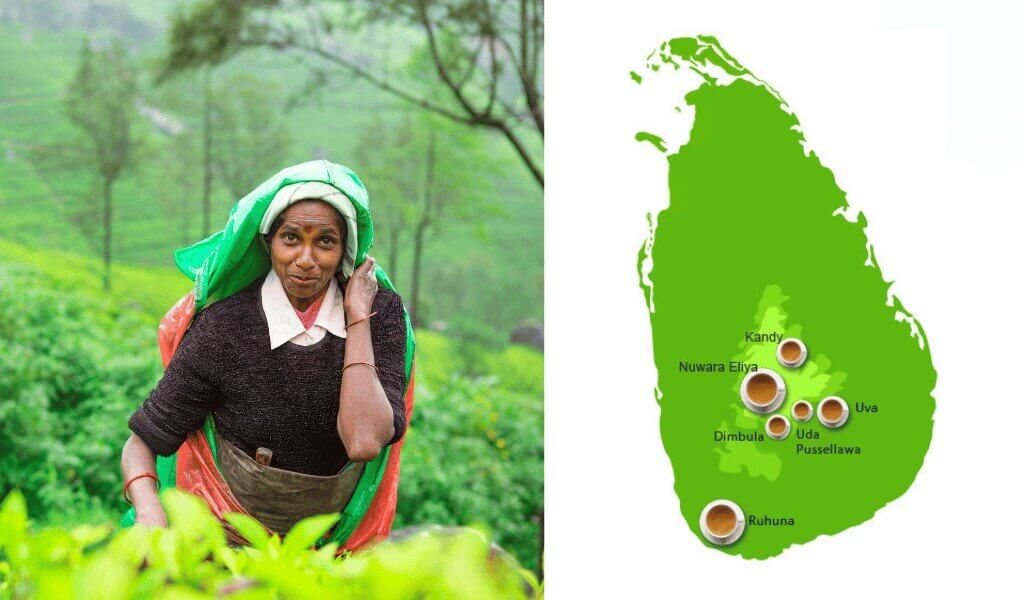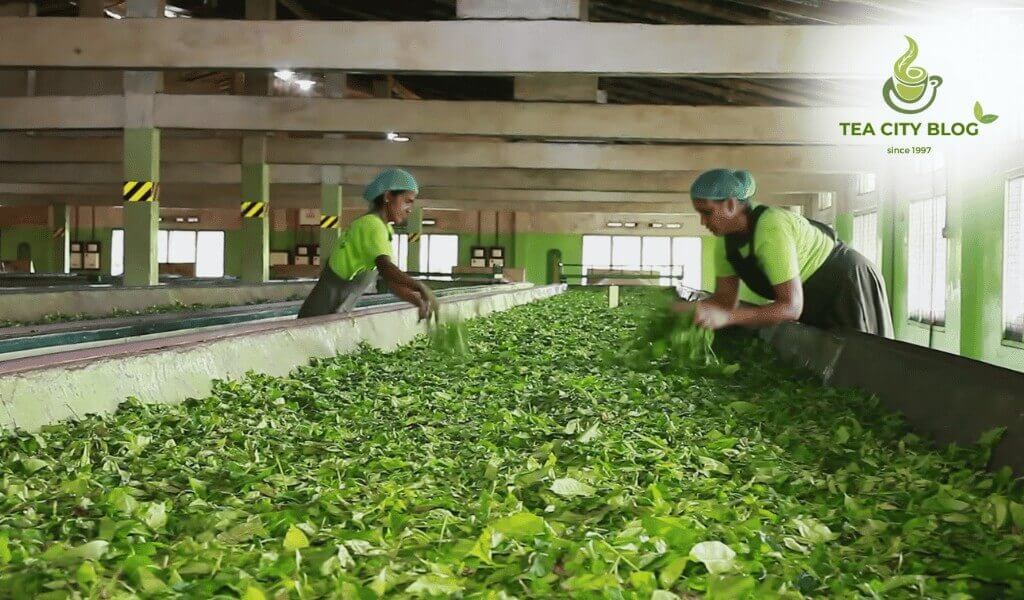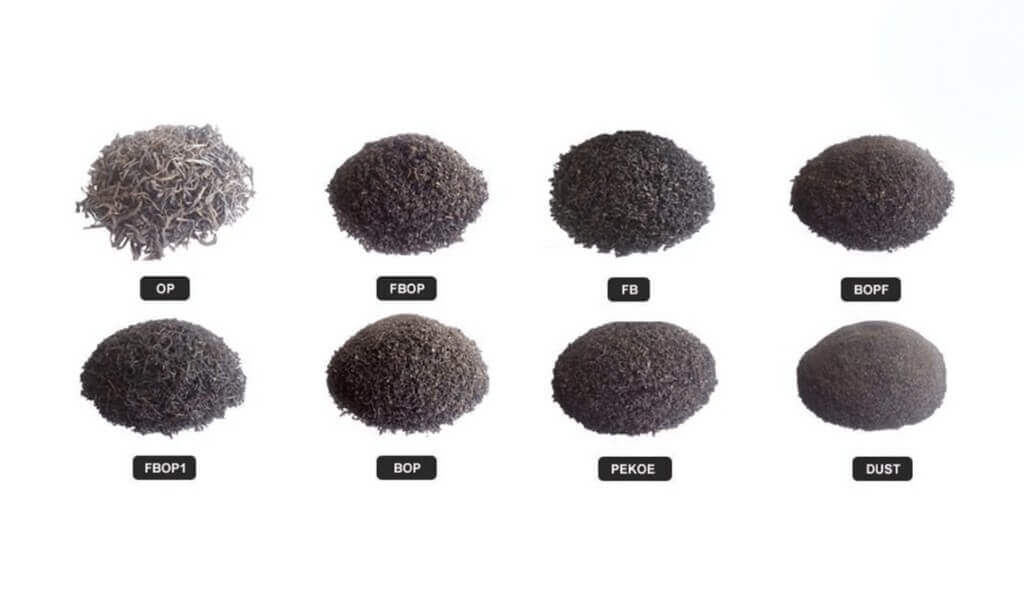Are you, like me, a tea lover or simply searching for a new “what is Ceylon Tea?” might be a question you are hunting for the answer. I’ve found that Ceylon Tea, known for its unique flavor and rich history, has captured the hearts of tea enthusiasts worldwide.
But what sets this aromatic brew apart from the rest, and why should we consider sipping on this exquisite beverage? Join me as I unravel the captivating story of Ceylon Tea and explore the many reasons why it may become your new favorite cuppa.
Let’s start from.
Quotes of tea with You
“Tea. I find that both settles the stomach and concentrates the mind. Wonderful drink, tea.”
– Cassandra Clare, City of Bones
What is Ceylon Tea?
Ceylon tea, also called Sri Lankan tea, is a well-liked Black tea. Tea drinkers enjoy it as a refreshing iced tea and a comforting hot drink. The taste of Ceylon tea can differ quite a bit because it depends on the specific type of tea and the region where it’s cultivated in Sri Lanka. Despite its bold flavor, it offers a range of delightful variations.
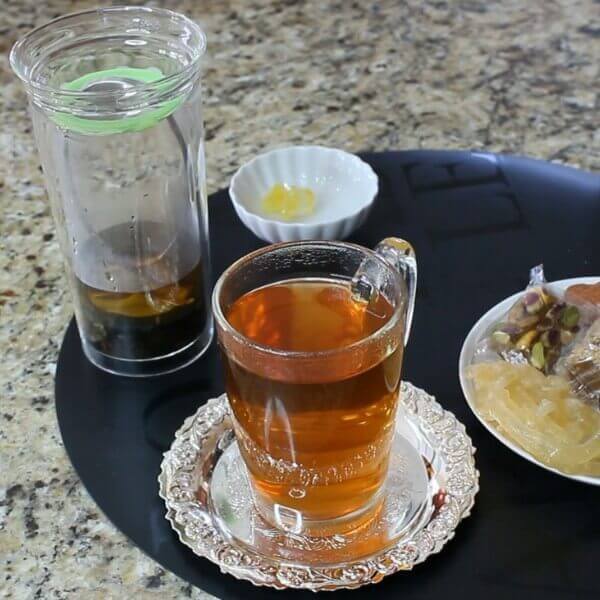
Like other teas, it’s made using the dried and processed leaves of the tea plant known as Camellia sinensis.
What sets Ceylon tea apart is its higher concentration of certain antioxidants like myricetin, quercetin, and kaempferol, which suit you. Plus, it has a distinct taste with hints of citrus and a rich, full-bodied flavor, all thanks to the unique growing conditions in Sri Lanka.
@zanatea.us What’s ceylon tea? 🇱🇰 . . . #tea #wellness #ceylontea #zanatea
You’ll find Ceylon tea in various forms, such as Oolong, Green, Black, and White. Each type has unique processing and tea production methods, giving them slightly different flavors and characteristics. So go ahead and give it a try – you might just find a new favorite!
Some famous Ceylon tea brands in Sri Lanka are Ahmad, Akbar, Basilur, Battler, Bogawantalawa, Damro, and Dilmah.
I think you will also be interested..
History of Ceylon tea
Ceylon tea has a rich and fascinating history that dates back to the 19th century. The history of Ceylon tea dates back to the 1800s when a brother named James Taylor arrived in the colony of Sri Lanka. At the time, the island was primarily known for its coffee production, but a series of coffee plant diseases in the 1860s resulted in a significant decrease in coffee production.
To find a new cash crop, the British began experimenting with Ceylonese tea plants, initially brought to the island as ornamental plants.
The first tea plant was successfully grown in 1867, and by the late 1800s, tea had become the dominant cash crop in Ceylon. The tea industry rapidly expanded, and soon Ceylon became one of the largest tea producers in the world. The tea produced in Ceylon was known for its high quality and unique flavor, and it quickly became popular in Europe and North America.
In the 20th century, the tea industry in Ceylon continued to grow and expand, and the island became one of the largest tea exporters in the world. Today, Ceylon tea is still known for its high quality and unique flavor, and it is enjoyed by tea lovers worldwide.
The history of Ceylon tea is a testament to the resilience and ingenuity of the people of Sri Lanka.
From the devastating coffee plant diseases of the 19th century to the thriving tea industry of today, Ceylon tea is a symbol of hope and a source of pride for the people of Sri Lanka.
How Ceylon Tea Grows
While some tea producers in Sri Lanka have started exploring green tea and other varieties, most Ceylon teas are still black. Sri Lanka has seven tea-growing regions, and these teas are grouped by three altitude levels: high grown (above 4,000 feet), medium grown (between 2,000 and 4,000 feet), and low grown (up to 2,000 feet).
Nuwara Eliya
Nuwara Eliya is the highest tea-producing area in Sri Lanka, nestled in the island’s center. The unique environment here creates tea with a lovely, floral aroma and a light, brisk taste. Nuwara Eliya teas are excellent when iced or served with lemon.
Uva
Uva, a high-grown tea region, is perhaps the most famous in Sri Lanka. Located in the country’s center, Uva’s Black tea has a sweet flavor and woodsy scent that pairs nicely with a bit of milk. Some white teas are also produced here.
Dimbula
Dimbula (or Dambulla), another central Sri Lankan region, has a diverse range of teas due to its varying elevation. Some are full-bodied, while others are delicate, but most have a mellow flavor.
Uda Pussellawa
Uda Pussellawa, near Nuwara Eliya, experiences heavy rainfall, which results in tea similar to Nuwara Eliya’s but darker, with a pinkish tint and a more pungent taste.
Kandy
Kandy, a medium-elevation district, produces mid-grown teas with flavors that change based on exposure to monsoon winds. These teas are generally full-bodied, malty, and have a beautiful copper hue.
Lastly
Lastly, Ruhuna and Sabaragamuwa are lower-elevation regions that produce rich, full-flavored low-grown Sri Lanka black tea.
With vibrant orange and red shades and hints of honey, chocolate, and caramel, most teas from these areas are processed as orange pekoes and flowery orange pekoes.
Read More:
- What Is The Caffeine Content in Darjeeling Tea?
- What is Assam tea? From vibrant valleys of Assam in India
- What is Earl Grey Tea? Ultimate Guide For origin, uses and types
- Discover the best 20 Types of Black Tea in the World 2023
How is Ceylon tea produced?
Ceylon Green Tea is a fresh and flavorful tea made by only partially fermenting the leaves. This keeps the leaves green and helps preserve the antioxidants.
Ceylon Black Tea, on the other hand, is made from both the stems and leaves of the tea plant. But, is Ceylon tea black tea? The leaves are allowed to ferment, creating a full-bodied tea often enjoyed as an iced tea. The fermentation process reduces the antioxidant content, though.
If you’re looking for something in between green and black tea, try Oolong Ceylon Tea. This tea is partially fermented and oxidized, giving it a unique flavor. The processing for this tea is more involved and includes steps like withering, tossing, oxidizing, fixing, rolling, drying, and firing.
Last but not least, White Ceylon Tea is a rare and expensive tea made from carefully hand-picked leaves. It’s the least processed Ceylon tea left to dry in the sun, preserving the antioxidants. Because of the hand-picking process, this tea is more expensive than other teas from Ceylon.
So, how many types of Ceylon tea are there?
Varieties of Ceylon Tea
Sri Lanka takes excellent care in ensuring that the packaging of pure Ceylon tea meets high standards. To use the lion logo, tea plantations must pass inspections by the Sri Lankan Tea Board. All teas produced in Sri Lanka are marked with a distinctive “lion logo,” which indicates the tea’s origin in Sri Lanka and its reputation for exceptional flavor and aroma.
When grading Ceylon tea, the focus is on the size and shape of the tea leaves rather than their flavor and aroma. There are several different grades of Ceylon tea, each with its own unique characteristics: Black Ceylon Tea, Green Ceylon Tea, and White Ceylon Tea.
In addition, Ceylon Tea is also divided into the following categories:
- Orange Pekoe: This is the highest grade of Ceylon tea, characterized by its long, wiry appearance and delicate flavor. The leaves are usually thin, not thick.
- Pekoe: Pekoe Ceylon tea tends to be slightly bitter compared to Orange Pekoe and has a shorter, twisted-leaf tea. Within this grade are Orange Pekoe A and Orange Pekoe 1 sub-category. Type A leaves are longer and more tighwrapped, while type 1 leaves are wirier.
- Broken Orange Pekoe: This Ceylon tea is made from broken leaves rather than whole leaves. Broken Orange Pekoe leaves are fleshier, open, and considered the highest grade among broken tea categories. They are often more fibrous than orange pekoe and, therefore, more astringent. There are also “fannings” within this category, which are smaller tea leaves commonly used in tea bags.
- Flowery Broken Orange Pekoe: This type of Ceylon tea is made from coarse, older leaves that have been broken. The tea may also contain tips of leaves and has a milder flavor. “Flower grades” are popular and offer unique flavors that can’t be found in other Ceylon teas.
- Dust: It is one of the lower-quality grades of Ceylon tea and is typically used for large-scale commercial brewing. It is made from ground-up tea leaves and fine particles.
- Silver Tips: Similar to white teas, silver tip Ceylon tea is made from the youngest buds of the tea plant. The result is a velvety body and smooth flavor with mild hints of sweetness.
The next part of this journey will be.
Regarding tea tasting: Selecting between loose tea leaves or tea bags
In Sri Lanka, people typically use tea powder instead of whole tea leaves. If that’s not your thing, no problem, you can always opt for tea bags. Now, I know that tea powder might look like low-quality broken tea, but the reality is that it’s different. Unfortunately, the market is flooded with cheap black tea, which has caused a lot of confusion.
On the other hand, Ceylan tea powder, also known as the dust grade, is mainly used in tea bags, blended black tea, and beverage factories in the low-price market. Most raw materials are made from cheap tea-processed fannings (broken tea powder) and dust (tea powder).
The point is the quality of tea bags, and tea leaves can vary greatly, so if you want to enjoy the best Ceylon black tea, it’s best to go for tea leaves. But, if you’re short on time or prefer convenience, then tea bags might be a better option.
The best way to enjoy a cup of Ceylon tea you should know.
Methods to Enjoy Ceylon Tea
Ceylon teas offer a delightful variety of ways to enjoy their unique flavors. They’re a popular choice for iced teas and make some of the most enjoyable hot teas you’ll ever taste.
Ceylon tea is often called a “self-drinker” because it’s perfect just as it is, without any added extras. You can also enjoy it in milk tea, which helps soften its bold taste and reduce bitterness.
Brewing Ceylon tea is a breeze. Start by warming your teapot and teacup with hot water, filling them halfway before pouring the water out. Then, add around one teaspoon of tea leaves per 8 ounces of water to the teapot. Pour boiling water (194 to 205 F) over the leaves, cover the pot, and let it steep for 3 to 5 minutes.
Give the tea a gentle stir once the leaves have settled at the bottom of the teapot to ensure proper extraction. Remember, the longer you brew the tea, the stronger the flavor and caffeine content will be!
Remarkable Nutritional Composition
Ceylon Tea, a favorite of mine, is a delightful beverage and an excellent source of antioxidants like Flavonoids . These compounds are important as they help combat oxidative cell damage, essential for maintaining good health.
In my experience, I’ve learned that antioxidants are crucial for overall well-being, which is pivotal in protecting us against chronic conditions like cancer, diabetes, and heart disease. Ceylon Tea, in particular, is abundant in antioxidants such as myricetin, quercetin, and kaempferol.
For those who prefer Green Ceylon Tea, you’ll be happy to know that it contains epigallocatechin-3-gallate (EGCG), a compound known for its powerful health-promoting properties, as demonstrated in human and test-tube studies.
As an expert in the field, I can assure you that all varieties of Ceylon Tea provide a modest amount of caffeine and several essential trace minerals like manganese, cobalt, chromium, and magnesium. So, not only does Ceylon Tea offer incredible flavors, there are many health benefits of it that make it a fantastic choice for tea enthusiasts!
Uses
Ceylon tea is a delightful drink that can be enjoyed either hot and freshly brewed or as a refreshing iced tea. Add lemon, sweeteners, or milk to soften its bold taste and lessen the bitterness to make it even more delicious. With its caffeine and refreshing qualities, Ceylon tea is perfect for sipping in the morning or during an afternoon break. It’s a fantastic way to add a little pep to your day!
Is Ceylon Tea truly exceptional?
As someone knowledgeable about Ceylon tea, it’s a fantastic choice. It’s rich in antioxidants, promotes heart health, aids in weight loss, and enhances mental alertness. Plus, it supports the immune system and helps relieve stress.
Overall, Ceylon tea offers various health benefits and tastes great, making it an excellent addition to a balanced diet and healthy lifestyle.
Where can one purchase genuine Ceylon tea?
It depends on where you live. Sri Lanka has a lot of it. And very lovely it is too. It’s trendy in Turkey. The Turkish grocery stores near me in London sell it. I saw a 1-kilogram bag for £10 last time I was there. Twining sells it as Orange Pekoe. Other tea merchants and supermarkets in the UK market it too.
Proper Storage Techniques
To keep your tea fresh, store it in a clean, airtight, cool, dry container. Avoid storing it near moisture, heat, light, or any strong odors that might affect the taste. With these tips, you’ll be able to enjoy the delicious flavor of Ceylon tea for a long time.
In Conclusion
Ceylon tea is a unique and flavorful type of tea with a rich history and various health benefits. Ceylon tea is worth considering whether you are a tea enthusiast or just looking to try something new. With its distinct taste and numerous health benefits, it is no wonder that Ceylon tea is becoming increasingly popular.
This article explored what Ceylon tea is, its origin, flavor profile, and health benefits. We also touched on the importance of purchasing high-quality Ceylon tea to enjoy its flavor and benefits fully.
Now that you know more about Ceylon tea, it’s time to take action. If you want to try a new type of tea or add a new flavor to your collection, consider giving Ceylon tea a try. You won’t be disappointed!
“What is Ceylon Tea” is a topic worth exploring for tea lovers and those looking to try something new. With its unique flavor and numerous health benefits, Ceylon tea is an excellent option for anyone looking to add a new type of tea to their collection. So, don’t hesitate to try Ceylon tea today!
Thanks for Spiriteadrinks
FAQs
Is Ceylon tea like normal tea?
Ceylon Tea is best described as a refreshing delight. Compared to Assam tea, it has a brighter and crisper taste and a lovely, smooth finish. For those Ceylon teas cultivated at exceptionally high altitudes, you may notice a somewhat more delicate flavor, accompanied by a light amber hue in the brew.
What makes Ceylon tea different?
Ceylon Black Tea is highly prized for its rich color and robust and citrusy flavor, with more caffeine than other teas. Ceylon Green Tea has a unique taste different from other green teas globally.
Is ceylon tea black tea?
Ceylon tea, which comes from Sri Lanka, is a unique black tea. Unlike other black teas, it is made from a distinct type of the Camellia sinensis plant. This plant produces various teas, including black tea, green tea, and oolong tea.
Is Ceylon tea the same as Earl GREY tea?
Ceylon tea is a type of black tea, but not all black teas are Ceylon. Earl Grey is produced globally, including in Sri Lanka, China, India, and Kenya. Therefore, Earl Grey is not the same as Ceylon tea, but both are delicious.
Why is it called Ceylon Tea?
Ceylon tea refers to the brand produced in Sri Lanka and the historical term for tea from the region. Ceylon tea is a cultural, heritage, and identity pillar in Sri Lanka, not just a geographical descriptor.
What do Turks think about Ceylon tea?
Ceylon tea gained popularity in Turkey after the Chornobyl Incident due to concerns over radioactivity in Turkish tea from the Black Sea Coast. However, most Turkish people still prefer the local tea for its taste.
What are the different ways to prepare Ceylon tea?
You can prepare Ceylon tea in various ways, including steeping loose tea leaves in hot water, brewing tea bags, or using a tea infuser. It can be served hot or cold with or without milk and sugar.
I’m Shanna, creator of Spiritea Drinks. I’m all about teaching people to grow their own food, tea, cook what they harvest, and eat with the seasons.

